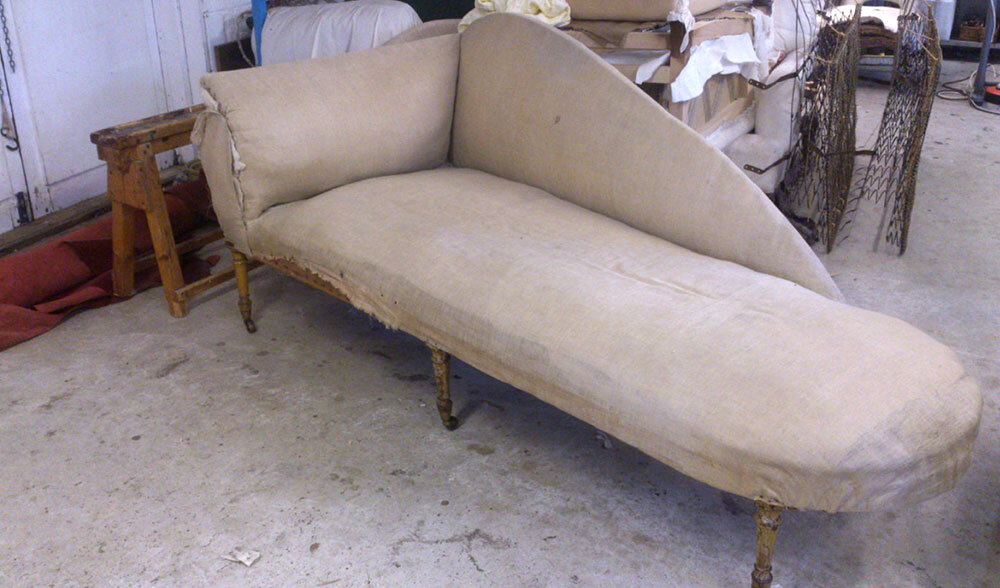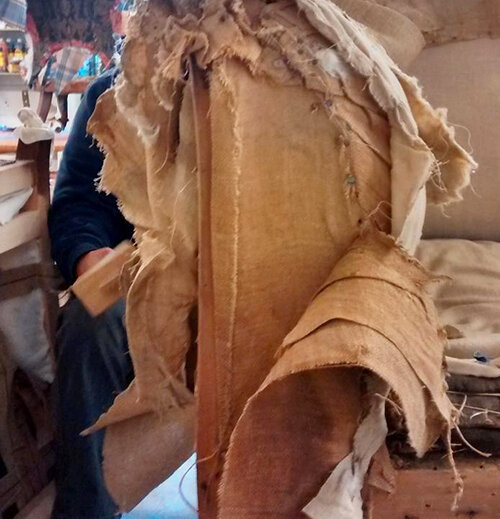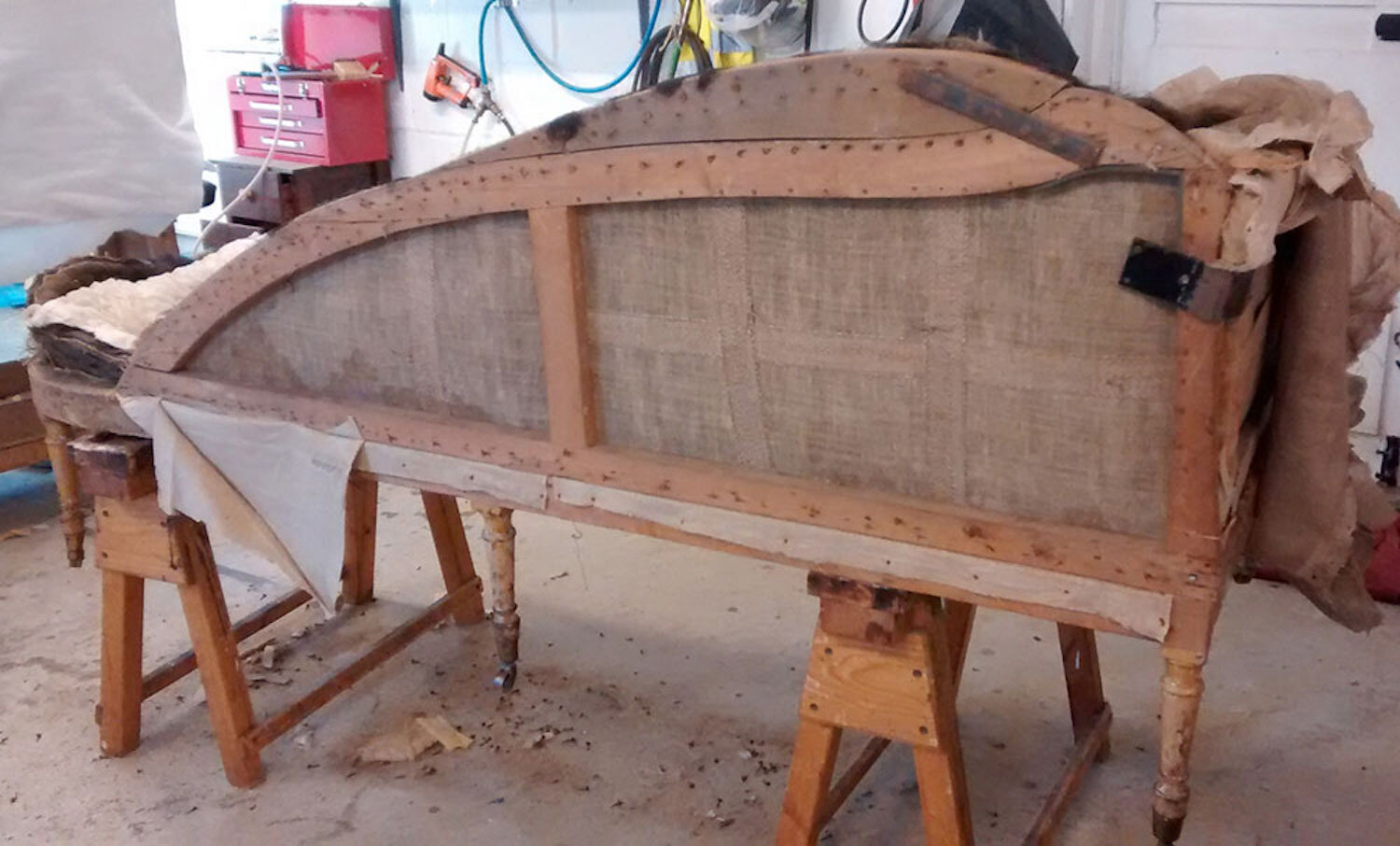Walmer Castle
The restoration of this library chaise longue was part of an English Heritage renovation project at Walmer Castle — the Tudor fortress and stately home for Lord Wardens of the Cinque Ports.
The chaise was presumed to be a later addition to the castle because of its curved frame and loose, victorian style cover. However, beneath the overstuffed upholstery, we found hand-painted faux bamboo legs and a tapered back. This is typical of Neoclassical design and told us that the chaise was added to the castle’s library much earlier than we’d thought.
In fact, we discovered the earliest mention of the chaise noted in the 1790s by William Pitt The Younger (Britain's youngest-ever prime minister, at 24 years old). At some point in the mid-19th century, the original tapered back had become a simple curve, and coil springs with meadow grass were added to the seat.





We carefully removed these later changes to reinstate the original features before replacing the missing corner blocks and stretcher rails, and repairing the broken mortise joints.
While preserving the 18th-century webbing and hessian on the arm and back, we re-webbed the seat and made a new horse-hair-stuffed cushion and bolster using traditional upholstery methods.
We then re-covered the chaise in a 1790’s Indian-inspired fabric to complement the scarlet ‘moreen’ curtains also mentioned in Pitt The Younger’s inventory.




As the chaise began to take its true shape, it revealed a defined taper narrowing to the end. Out of context, there was no logical reason for this unusual feature. It was only when we revisited the castle library that we noticed this shape matched the curvature of the library’s window alcove — the chaise’s original position back in the 1790s.
Walmer Castle is a fascinating place to discover the historical importance surrounding the Cinque Ports. You can also see Pitt The Younger’s fully-restored chaise longue in situ.
You’ll find the castle’s opening times and more information at english-heritage.org.uk

